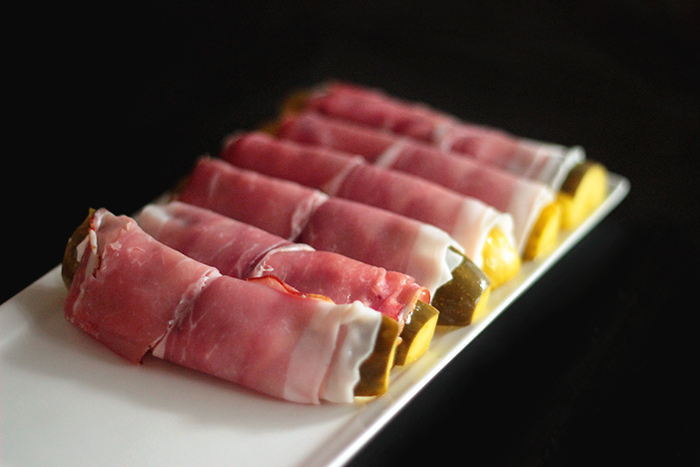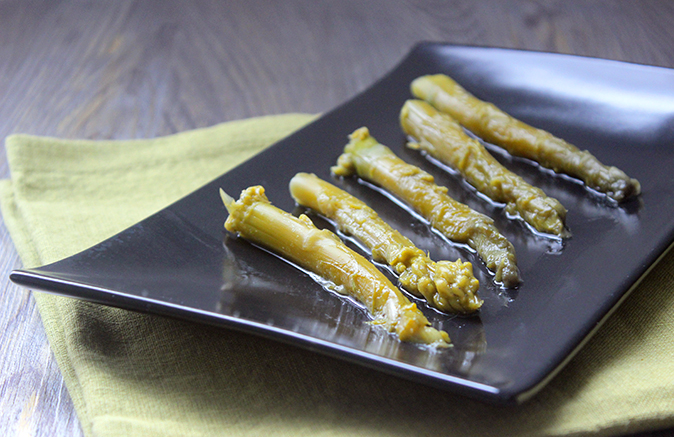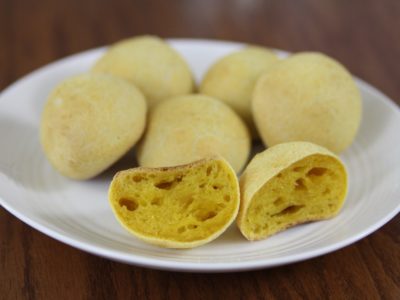 This review was written by my assistant Christina.
This review was written by my assistant Christina.
Fermented foods are a very important part of a Paleo lifestyle, helping to restore and maintain healthy gut flora (see Sarah’s post on the subject here). While many fermented foods can be purchased at most grocery stores (like sauerkraut, kimchi, kombucha, pickles, and yogurt), making your own is not only cheaper, but also opens up a wider variety of delicious, healthy foods. Fermenting is a very simple process involving adding salt and any additional seasonings you would like (garlic and peppers are popular choices) to whole, chopped, sliced, or shredded vegetables and letting the whole thing sit until fermented. Which seasonings to add, how much brine to use, and how long to let a food ferment is where the art lies.
Fermented Vegetables by Kirsten and Christopher Shockey brings that art into your kitchen. The beginning of the book discusses the chemistry of fermentation and introduces the tools you will need (as well as some optional gadgets that will make the process easier). Kirsten and Christopher also offer tips for safely fermenting and storing your ferments (including a guide in the back of the book on what types of residue are and are not normal and tips on some vegetables that do not ferment well), then ease into the recipes with common ferments like sauerkraut, kimchi, and pickling.
Following this intro to the basics, the recipes are organized alphabetically by the type of vegetable or fruit being fermented. Have some basil or asparagus lying around and looking for something to do with it? Flip to “asparagus” or “basil” in Fermented Vegetables and find a recipe (or two or three) to turn that produce into a side or condiment like kraut, kimchi, pickles, or chutney. The latter pages of the recipes section features recipes making use of the ferments in earlier pages. This section is divided into Breakfast, Snacks, Lunch, Happy Hour, Dinner, and Dessert categories. Recipes include Chili, Kimchi Latkes, Northwest Gingered Carrot Cake, Kimchi Marys, and many more creative ways to use your fermented foods. And there are bright, beautiful full-page photographs to entice you at every turn of the page.
Save 80% Off the Foundations of Health
Expand your health knowledge on a wide range of topics relevant to you, from how to evaluate scientific studies, to therapeutic diet and lifestyle, to leaky gut and gut microbiome health, to sustainable weight loss, and much more!!!

But it is important to note that this isn’t a Paleo cookbook. The recipes are labeled gluten-free, vegan, and vegetarian when appropriate, but some do contain non-Paleo ingredients like corn, dairy, soy, and peanuts. However, the vast majority of the ferments themselves are Paleo and many of them are even autoimmune protocol-friendly (or could easily be made so by omitting an ingredient or two). It’s the recipes that use the ferments to make breads, schmears, and other dishes that you have to be careful with.

I made New York Deli-Style Pickles and Asparagus Pickles, both of which use brining and a few seasonings to turn cucumbers and asparagus into tart, crisp pickles. Then, I made the Pickle in a Blanket (the blanket being prosciutto) using both the cucumber pickles (pictured above) and the asparagus pickles (pictured below). While the recipe calls for adding cream cheese to the wrap, I simply omitted it. If you haven’t tried wrapping virtually every fruit and vegetable you eat in prosciutto, I highly recommend it. These pickles were a wonderful finger food for one of our game night gatherings and I only regret that I didn’t make about a billion more! The pickles were extremely easy to make and the Pickle in a Blanket was a fun, presentable appetizer that only took minutes to throw together.

Whether you are new to fermenting or looking for a wider variety of recipes to add to your collection, whether you are looking to increase your probiotic intake or simply to preserve your foods (or both), Fermented Vegetables is an excellent cookbook to bring into your kitchen. It may not be strictly Paleo, but it is highly adaptable. Adding a variety of fermented foods to your Paleo diet can not only be an exciting increase in the variety of vegetables and flavors available to you, it is also an important part of maintaining healthy gut flora and, by extension, good health.









